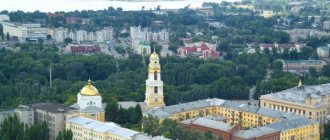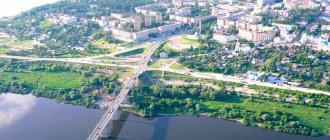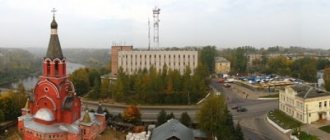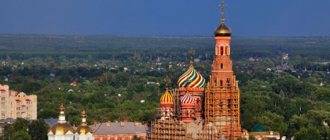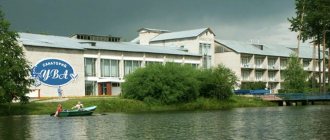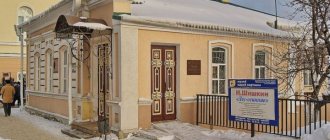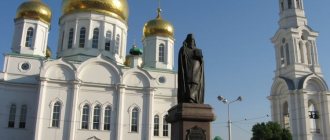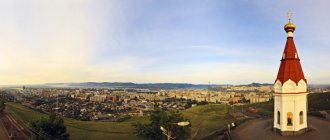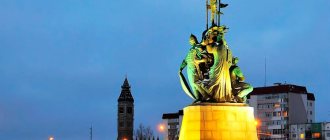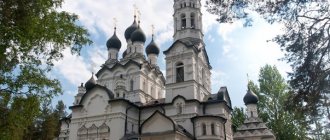Mineral springs
Mineral springs
The city of Lipetsk is cozy and green, with many interesting places that reflect the history of this locality. For example, the old Nizhny Park with mineral waters is a wonderful balneological resort.
In addition to all the necessary structure, there are qualified specialists here. The pump room with mineral water is open on a permanent basis. The healing power of local waters has been noted in the treatment of gastrointestinal tract systems, gynecology, and many other diseases.
The local mineral springs are about 200 years old, and the city received official resort status in 1805. The buildings of the mineral baths and the hospital have been preserved to this day.
The resort complex has an English-style park. The modern health resort welcomes both adults and children.
Matyr Reservoir
The reservoir is located in the Gryazinsky district on a fairly large river called Matyr. This is the largest water body in the region. Seasonal flow regulation is carried out at the reservoir. The water is mainly used for water supply to recreation and nearby populated areas. Before this, in 1980, the reservoir was used for fishing. In addition, water is used in a closed cycle at thermal power plants and in agriculture for irrigation. On the right bank there is a rich forest and a lot of sanatoriums and recreation centers.
During the summer heat, the water begins to “bloom,” and because of this, oxygen becomes low, and fish begin to die en masse. The complete disappearance of chub, catfish and burbot, which used to be abundant here, has already been recorded.
Lower Park
Lower park top view
The natural site is located near the health resort and includes infrastructure for sports and recreation. On the territory of the park there are cafes, restaurants and some attractions of Lipetsk. This place is popular for walks and among city residents.
Tourism in the Lower Park is not limited to visiting healing springs. The local nature is attractive: a suspension bridge spans a small canal.
Natalya Goncharova and Anna Kern once walked along one of the alleys. This path still exists today and is called “Golden”.
In Nizhny there is a monument “Narodovolets”, erected in honor of revolutionaries united by the common idea of revolutionary terrorism. The sculpture is a ring mounted on stone pedestals. The monument was erected in honor of the centenary of the People's Will movement.
Monument "Narodovolets"
In the Lower Park, near Petrovsky Spusk, there are three cannons that symbolize the birth of metallurgy in the city. The year of foundation of the monument is 1960 of the last century.
Monument to the birth of metallurgy
The walking route along the paths passes through the forest, which includes linden and oak trees. The entire flora is represented by dozens of species of shrub plants. The park is a popular location for local photographers.
There is also a zoo and a planetarium in the park area. A child busy on a trip will be happy to visit about two dozen different attractions. This entertainment is not lost on the townspeople either.
Small cafes in the park offer birthday celebrations, the entertainment is accompanied by animated performances.
The famous amusement park does not accept guests on weekdays, but you can go and spend time among the greenery, stroll along the alleys, and see the sights of Lipetsk on any day.
Zoo
Lipetsk Zoo is almost the main attraction of Nizhny Park. It was founded back in 1973, at that time it was only the base of a living corner. Since that time, the area of the zoo has expanded and now occupies more than 4 hectares, on which more than 3,500 animals and birds live, in total there are more than 300 species. Most of the inhabitants are listed in the Red Book.
In 1993, the zoo was included in the Euro-Asian Association of Aquariums and Zoos. The specialists working there are happy to actively cooperate with Moscow zoos and others, and are constantly engaged in the implementation of projects for the exchange of scientific data and animals. In 2006, a petting zoo was created for the youngest guests. This is a large enclosure in which goats, rabbits, some species of birds, and baby llamas live. Children can enter this area and pet/feed the animals. In addition, you can admire the fish in the aquarium and go into the terrarium.
In the near future, it is planned to almost double the territory of the zoo so that there will be new entertainment and attractions, themed corners dedicated to African animals and predators.
Aviators Square
MIG-19 on Aviator Square
This landmark of Lipetsk is adjacent to the Lower Park and is the largest city square. The streets adjacent to the memorial site are: Cosmonauts and Gagarin
A real MIG-19, which has been on a pedestal since 1992, was used as a monument to the heroes. The architect who worked on the monument erected the monument vertically, bursting into the sky.
Monument to fallen pilots “You have gone to heaven”
In the year of the city’s 300th anniversary, another monument was erected on the square - to the fallen pilots from the local airfield. In 1968, heroes took a falling plane away from residential areas of the city, thereby saving the lives of citizens. Fresh flowers constantly appear at the monument.
Zadonsk
The city of Zadonsk is not often seen in photos of Lipetsk sights. Interestingly, it is famous not only for its endless fields, vast forests with birch trees and its close location to the Don. It has become popular because it is considered one of the best Orthodox centers in Russia. Every year many pilgrims come here from all over the country to visit the places of saints and numerous temples. If you are in this town, visit the Church of the Assumption of the Blessed Virgin Mary and the Trinity Church, where infants are often baptized and weddings are held.
Temple on Cathedral Square
Nativity of Christ Cathedral
The Nativity of Christ Cathedral is the spiritual center of the city. This is a dominant structure among urban architecture, as the building is clearly visible from any point in Lipetsk.
The architectural monument dates back to the 18th century and has several shrines inside. The main one is the face of the Mother of God, in the temple since 1831. It is believed that the shrine helped the townspeople get rid of cholera.
Another shrine is the relics of the venerable fathers of the Kiev Pechersk Lavra. The storage area for the relics is made of mahogany, with crystal lamps installed around it.
The design of the cathedral was proposed by the Italian master Tommaso Adolini. Construction began thanks to donations from holidaymakers coming to Lipetsk for treatment.
In 1803, construction was completed, but there was a fire, so services were not held in the temple for another two years. All work was completely completed in 1948.
Currently the complex includes:
- bell tower (its height with spire is 60 m);
- temple refectory;
- a classical style temple with two tiers and a gilded dome.
Believers have been gathering for services since 1991; during the revolution, everything was looted. In 2000, they began to restore the murals; work was carried out using photographs of the surviving frescoes.
The temple housed a local history museum. Later, the House of Soviets appeared on the territory of the center. The structure has twins in 13 other regions of the country.
Currently, both ceremonial and ordinary services are held in the temple.
Lipetsk Regional Art Museum
Lipetsk Regional Art Museum
Lipetsk
The Lipetsk Regional Art Museum is located in the historical center of the city, in a mansion from the early 19th century. Previously, the building was part of a city noble estate: it was erected on the foundation of a house that belonged to Alexander Pushkin’s relatives on his mother’s side. It is believed that in 1837, the future Emperor Alexander II and his mentor, the poet Vasily Zhukovsky, stayed here.
The museum's collection consists of sections of painting, graphics, sculpture and objects of decorative and applied art of the 20th century. The works of Lipetsk artists - Vladimir Vyaltsev, Vilen Dvoryanchikov, Nikolai Sysoev - are stored here. Also in the museum you can see a set of painted wooden dishes, which was created by the master of Khokhloma painting Marfa Sineva.
The branch of the Art Museum "Master's House" occupies a two-story house of the early twentieth century, built in the Art Nouveau style. Since 1957, artist Viktor Sorokin lived here. His works form the basis of the exhibition. Paintings by other Lipetsk artists of the 20th century are also exhibited in the “Master’s House”. The art gallery occupies the second floor of the building, and the artist’s studio has also been recreated there. On the ground floor there is a living room where concerts and literary evenings are held.
Stela to Peter I
Stela to Peter the Great
The monument to Peter I in Lipetsk is installed on the descent from the mountain and is an important city symbol. The Imperial Obelisk is most often used as an emblem of various Lipetsk goods. For example, this is a symbolic label of a local mineral water.
The year the obelisk was made was 1869. The wealthy merchant Pavel Nebuchenov was responsible for the work. The story of the appearance of the monument begins with the recovery of the philanthropist.
Having recovered from a serious illness, Nebuchenov decided to give the city a gift. The obelisk is a beautiful elongated triangle. The area around is surrounded by a cast iron fence.
The pedestal includes cast iron slabs with bas-reliefs. The area of one of the boards is decorated with the figure of Hephaestus. The bas-relief symbolizes the ironworks of Lipetsk.
Another tablet includes the face of the goddess Hygeia. This is a symbol of local mineral waters. Hygeia is represented leaning on a vessel with water, and next to her lies a snake - a symbol of medical institutions.
Lipetsk Regional Museum of Local Lore
Lipetsk Regional Museum of Local Lore
Lipetsk
The local history museum opened in 1909, at the request of Mikhail Trunov, one of the first specialists in library and archival affairs in Lipetsk. Trunov and became the first director of the museum. Most of the exhibition was collected by city residents. It included antique books, dishes, furniture, and clothing.
After the revolution, the museum was nationalized. At the same time, new exhibits appeared in it, which were seized from the noble estates: paintings, sculptures, bronze figurines and candlesticks, porcelain sets.
Now the permanent exhibition of the museum is divided into several thematic zones. One of them tells about the life of Lipetsk in the era of Peter I: it includes a model of the imperial travel palace, a reconstruction of one of its rooms, and models of the first ships of the Russian fleet, built in Lipetsk by order of Peter. At multimedia stands, visitors can watch short documentaries about the life of Lipetsk residents in the 18th century.
The section “Merchants are a serious people” is dedicated to the history of Lipetsk trade. Items from merchant houses and shops, gold and silver coins from treasures found in the city are also stored here. In addition, the museum's exhibition tells about the life of townspeople in different eras, the nature of the Lipetsk region, archaeological finds at the sites of ancient Slavic and Scythian settlements. The museum's art collection contains works by famous artists: Apollinary Vasnetsov, Ivan Aivazovsky, Leonid Pasternak, Konstantin Yuon.
The museum also has a branch - the house where revolutionary Georgy Plekhanov was born and lived. It has preserved the furnishings of the late 19th century, and in one of the rooms Plekhanov’s study in Geneva has been recreated.
Cathedral Square
Fountain on Cathedral Square
This is the best observation deck in the city. An interesting object allows you to see almost all the sights of Lipetsk and its districts. The viewing area is slightly narrowed by lush greenery, which is especially beautiful in spring.
The square is built on the site of former mountains. Now on the slopes there is not just one fountain, but entire cascades. Entertaining recreation in the center is not limited to excursions alone. Clubs in the center of Lipetsk are chosen by both local residents and groups of visiting young people.
The space of the cathedral mountain was not initially a public object. It was a trading place, as well as a storage point for the city treasury.
Then, in 1918, the square was renamed International. The road to rallies, processions and demonstrations began from the square.
Asphalt appeared on the square by 1993. At the same time, a monument to Lenin was erected here. The historical description states that the territory was renamed in honor of the chief. The townspeople habitually call the central square Lenin-Sobornaya.
Video review of Lipetsk sights
Lipetsk will certainly appeal to fans of city tours in Russia. And after watching the video we specially selected for you, you will be convinced that it is a rather interesting place.
For me, Lipetsk became not just another city in Russia, but opened up somehow in a new way, with interesting places and historical sites. Please advise what other attractions of Lipetsk are worth paying attention to, where else you can relax with the whole family? I look forward to your suggestions in the comments.
Academic Drama Theater
For the first time, the doors of the theater officially opened in the summer of 1921, and then it had the name “First Soviet Drama Theater”. After 30 years, children's and musical theaters joined it and the associations began to be called “Theatrical Experiment”.
In the fall of 1986, the theater moved to a building within the walls of which they still stage several performances a week. The premiere screening was the film "Quiet Don".
In 1981, the theater was named after L. Tolstoy. In 1994 and after, the theater became state-owned. The ticket price varies from 350 to 1000 rubles - it all depends on the performance you choose.
